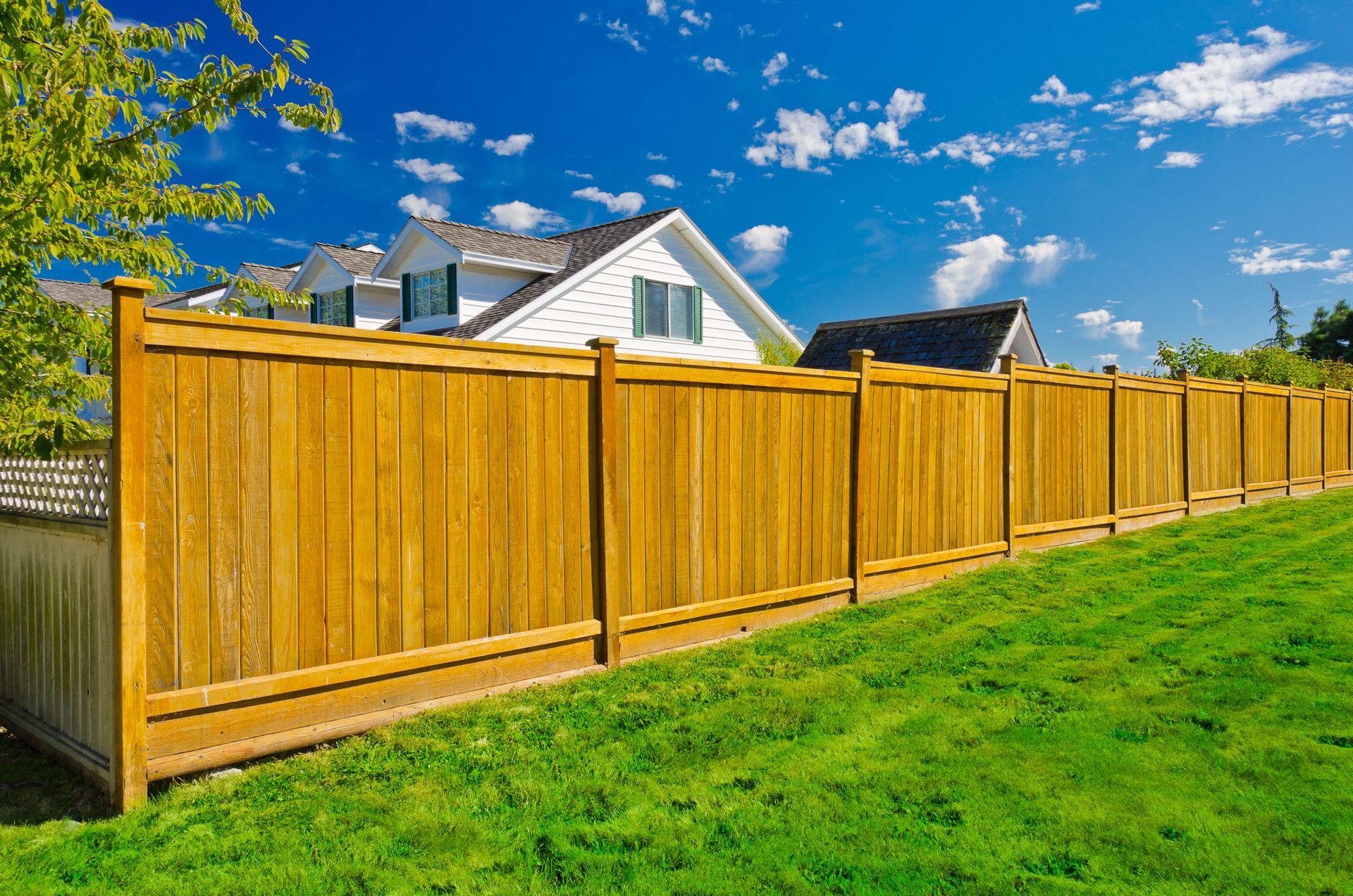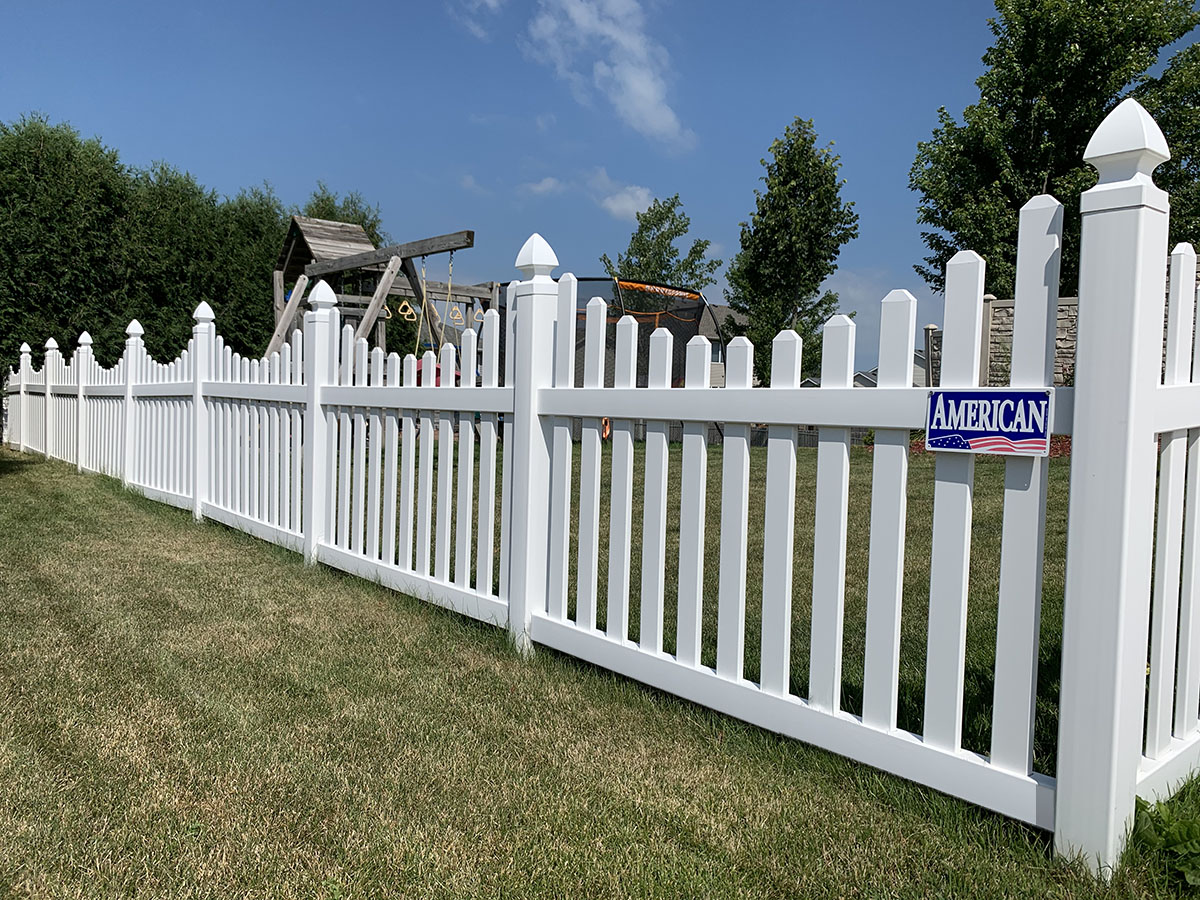All Categories
Featured
From heavy rainfall and snow to extreme sun and wind, weather-related damages is one of the most usual reasons of fence damage. While you can't manage the weather condition, there are a number of means to protect your fence from the damaging effects of climate and ensure it lasts for years to come.
Wooden Fencings: While wooden fences are a traditional option, they are very prone to wetness and insects. To make a timber fencing much more long lasting, select pressure-treated lumber, cedar, or redwood. These materials are more immune to rot and insects. You'll still need to secure the timber from the elements with regular maintenance.
Vinyl Fences: Vinyl fencings are highly long lasting and need little upkeep. They are resistant to fading, fracturing, and warping, making them optimal for areas that experience severe sun, rain, or cold weather. Vinyl additionally will not rot or attract insects, providing long-term defense without the need for constant upkeep.
Steel Fencings: Wrought iron and aluminum fencings are outstanding selections for their toughness and resistance to wind and moisture. They are vulnerable to rusting over time, especially if subjected to frequent rainfall or humidity. Go with galvanized or powder-coated metal fencings to reduce the danger of corrosion.
![]()
Compound Fences: Incorporating timber fibers and plastic, composite fences are resistant to decaying, fading, and pest damages. They supply the look of timber with less upkeep, making them a perfect option for areas with variable climate condition.
![]()
Wood Fencings: A top quality timber sealer or tarnish is important to shield your fence from the components. Wood sealants block wetness and safeguard against mold and mildew and mold development. They additionally avoid UV damage that can cause fading and splitting. Make sure to reapply the covering every couple of years to maintain your surround top problem.
Plastic Fences: While plastic is low-maintenance, you can still protect it better by using a UV protectant. These finishings help protect against staining triggered by long term sunlight direct exposure. Additionally, utilize vinyl-specific cleaners to keep the surface area cost-free of discolorations or dirt buildup.
Steel Fences: To shield steel fencings from corrosion and corrosion, think about using a rust-inhibiting primer followed by a safety paint created for outdoor use. Powder finishing provides a durable and resilient finish that can withstand harsh climate. if feasible.
Wooden Fencings: Tidy your wood fencing with a pressure washer or a soft towel and light cleaning agent. Inspect the fence frequently for indicators of rot, cracks, or insect infestations.
Vinyl Fences: Vinyl fencings are easy to tidy with soap and water. For tougher stains, you can utilize a mild bleach option or a vinyl cleaner to bring back the fencing's appearance. Don't forget to check for any fractures that may let water in, resulting in more damage.
Metal Fencings: Tidy steel fences with a soft fabric to get rid of dirt, rust, and dirt. If you observe rust places, remove them right away with a cable brush and treat the location with a rust-resistant guide or paint to stop it from spreading.
Wooden Fencings: When setting up wooden fencing messages, make sure they are set deeply right into the ground, preferably below the frost line to avoid moving throughout freezing temperatures. Usage concrete to secure the messages and stop them from being or leaning uprooted by solid winds.
Steel Fencings: For steel fencings, make sure that the blog posts are securely secured in concrete. This is particularly essential in regions with hefty winds or regular tornados. You may likewise intend to set up additional supporting to supply additional support versus wind anxiety.
Additionally, too much wetness from nearby plants can lead to mold and rot in wood fences, so maintain greenery at a risk-free range to permit correct air movement and water drainage.
Steel fences ought to be evaluated for corrosion prior to the wintertime period starts, and any type of impacted locations must be treated with rust-resistant products. Furthermore, using a layer of paint or safety finishing before the cold climate sets in can aid secure your fencing from ice and snow damage.
![]()
Verdict. Shielding your fence from weather-related damages needs a mix of correct product selection, routine maintenance, and aggressive care. Whether you have a wood, plastic, metal, or composite fencing, the right safety steps can prolong its lifespan and keep its appearance. By complying with these easy yet efficient steps, you can secure your fencing against the aspects and maintain it looking excellent for several years to find.
- Choose Weather-Resistant Materials. Among one of the most effective ways to secure your fencing is by selecting the appropriate product for your environment. Particular products are a lot more long lasting and better fit to hold up against certain climate condition.
Wooden Fencings: While wooden fences are a traditional option, they are very prone to wetness and insects. To make a timber fencing much more long lasting, select pressure-treated lumber, cedar, or redwood. These materials are more immune to rot and insects. You'll still need to secure the timber from the elements with regular maintenance.
Vinyl Fences: Vinyl fencings are highly long lasting and need little upkeep. They are resistant to fading, fracturing, and warping, making them optimal for areas that experience severe sun, rain, or cold weather. Vinyl additionally will not rot or attract insects, providing long-term defense without the need for constant upkeep.
Steel Fencings: Wrought iron and aluminum fencings are outstanding selections for their toughness and resistance to wind and moisture. They are vulnerable to rusting over time, especially if subjected to frequent rainfall or humidity. Go with galvanized or powder-coated metal fencings to reduce the danger of corrosion.

Compound Fences: Incorporating timber fibers and plastic, composite fences are resistant to decaying, fading, and pest damages. They supply the look of timber with less upkeep, making them a perfect option for areas with variable climate condition.
- Apply Safety Coatings. No matter the material, using safety layers is crucial in expanding the life of your fencing. Coatings develop a barrier that guards your fence from wetness, UV rays, and various other ecological stressors.

Wood Fencings: A top quality timber sealer or tarnish is important to shield your fence from the components. Wood sealants block wetness and safeguard against mold and mildew and mold development. They additionally avoid UV damage that can cause fading and splitting. Make sure to reapply the covering every couple of years to maintain your surround top problem.
Plastic Fences: While plastic is low-maintenance, you can still protect it better by using a UV protectant. These finishings help protect against staining triggered by long term sunlight direct exposure. Additionally, utilize vinyl-specific cleaners to keep the surface area cost-free of discolorations or dirt buildup.
Steel Fences: To shield steel fencings from corrosion and corrosion, think about using a rust-inhibiting primer followed by a safety paint created for outdoor use. Powder finishing provides a durable and resilient finish that can withstand harsh climate. if feasible.
- Routine Cleaning and Evaluations. Appropriate cleaning and regular assessments are vital to keeping the honesty of your fence. Build-up of dirt, mold and mildew, and debris can trap dampness against your fence and cause long-lasting damage.
Wooden Fencings: Tidy your wood fencing with a pressure washer or a soft towel and light cleaning agent. Inspect the fence frequently for indicators of rot, cracks, or insect infestations.
Vinyl Fences: Vinyl fencings are easy to tidy with soap and water. For tougher stains, you can utilize a mild bleach option or a vinyl cleaner to bring back the fencing's appearance. Don't forget to check for any fractures that may let water in, resulting in more damage.
Metal Fencings: Tidy steel fences with a soft fabric to get rid of dirt, rust, and dirt. If you observe rust places, remove them right away with a cable brush and treat the location with a rust-resistant guide or paint to stop it from spreading.
- Strengthen Your Fencing with Proper Installment. Correct installation is among one of the most efficient means to prevent weather-related damage. A fence that is poorly mounted is more probable to collapse or suffer damage throughout storms.
Wooden Fencings: When setting up wooden fencing messages, make sure they are set deeply right into the ground, preferably below the frost line to avoid moving throughout freezing temperatures. Usage concrete to secure the messages and stop them from being or leaning uprooted by solid winds.
Steel Fencings: For steel fencings, make sure that the blog posts are securely secured in concrete. This is particularly essential in regions with hefty winds or regular tornados. You may likewise intend to set up additional supporting to supply additional support versus wind anxiety.
- Trim Trees and Shrubs Near Your Fence. Disordered trees and bushes can create significant damages to your fence, especially during high winds or hefty storms. Tree branches can scrape against the fencing, causing scratches, and their origins can undercut the blog posts. Maintain plant life trimmed and make certain that tree branches are not leaning on or near the fence.
Additionally, too much wetness from nearby plants can lead to mold and rot in wood fences, so maintain greenery at a risk-free range to permit correct air movement and water drainage.
- Winterize Your Fencing. If you stay in an area with severe wintertimes, take extra safety measures to secure your fencing from freezing temperature levels, snow, and ice. For wood fencings, see to it the base of the articles is elevated above ground level to stay clear of water buildup, which can fracture the timber and freeze. Take into consideration using a dampness obstacle around the base of the articles to keep them dry during the cold weather.
Steel fences ought to be evaluated for corrosion prior to the wintertime period starts, and any type of impacted locations must be treated with rust-resistant products. Furthermore, using a layer of paint or safety finishing before the cold climate sets in can aid secure your fencing from ice and snow damage.
- Post-Storm Repair works. Storms can create instant damages to your fence, including fallen branches, damaged blog posts, or dislodged panels. If your fence has been seriously harmed, it's a good concept to speak with a specialist for fixings to guarantee it stays structurally sound.

Verdict. Shielding your fence from weather-related damages needs a mix of correct product selection, routine maintenance, and aggressive care. Whether you have a wood, plastic, metal, or composite fencing, the right safety steps can prolong its lifespan and keep its appearance. By complying with these easy yet efficient steps, you can secure your fencing against the aspects and maintain it looking excellent for several years to find.
Latest Posts
Check Out the Leading Auto Repair Coupons in Montclare, Chicago
Published May 28, 25
1 min read
Expert Residential Roof Solutions You Can Trust
Published May 23, 25
1 min read
Discover Limited-Time Auto Repair Specials in Chicago at Montclare Auto Repair
Published May 23, 25
1 min read
More
Latest Posts
Check Out the Leading Auto Repair Coupons in Montclare, Chicago
Published May 28, 25
1 min read
Expert Residential Roof Solutions You Can Trust
Published May 23, 25
1 min read
Discover Limited-Time Auto Repair Specials in Chicago at Montclare Auto Repair
Published May 23, 25
1 min read